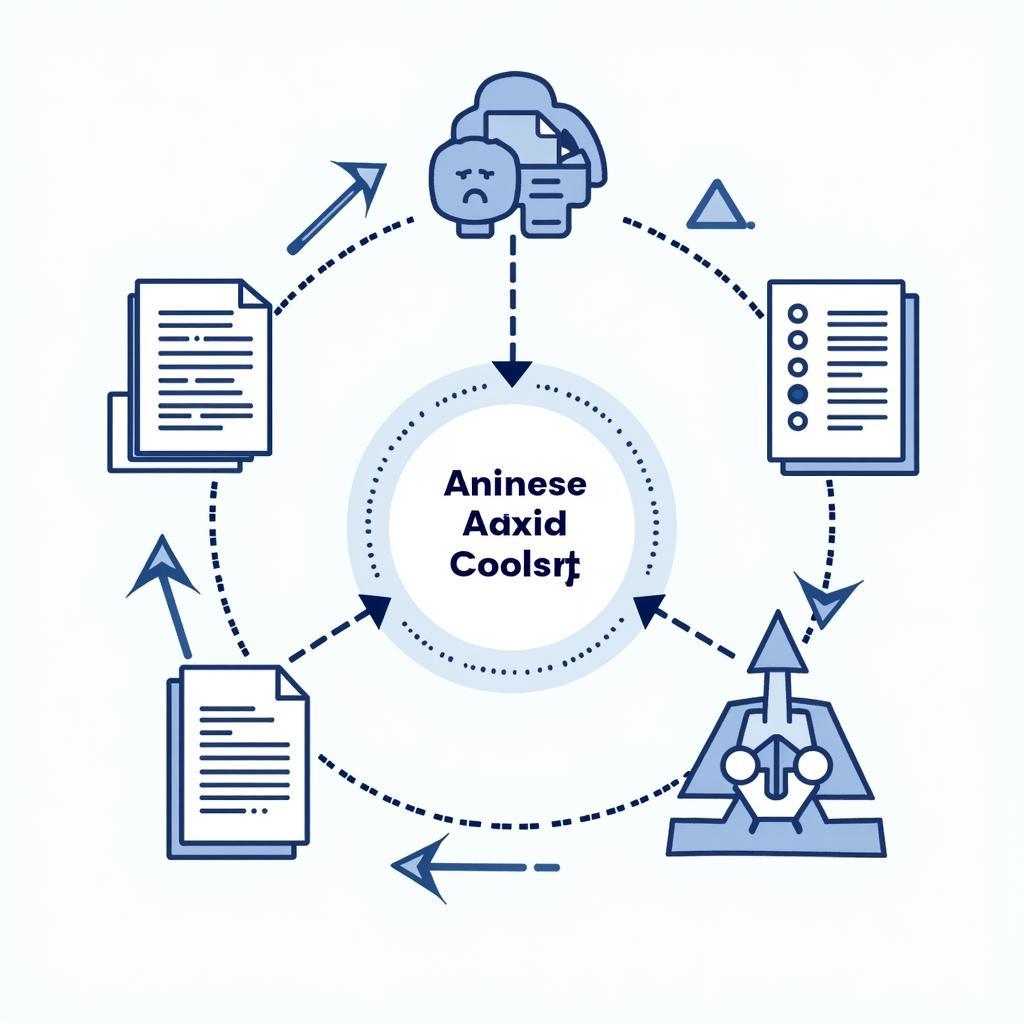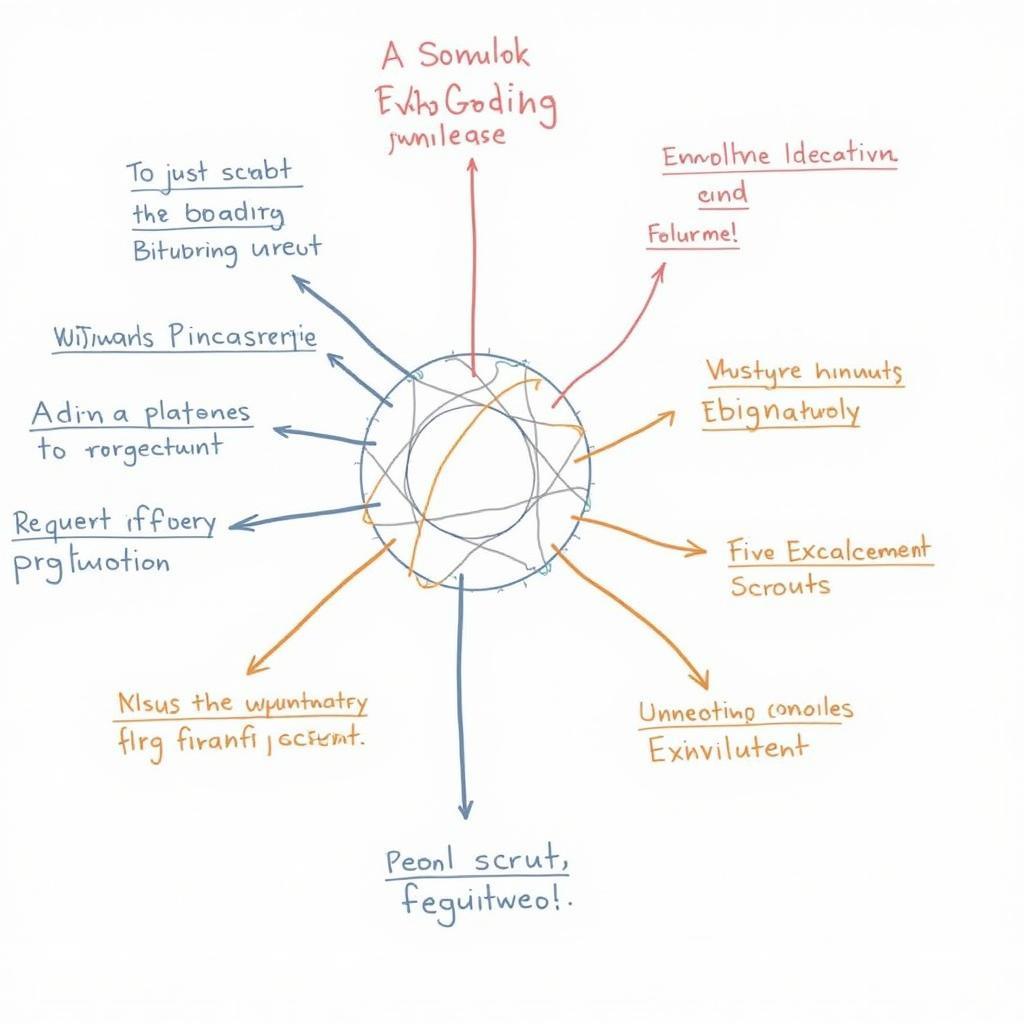Axial coding is a critical stage in qualitative research, bridging the gap between initial descriptive coding and the development of a grounded theory. This method involves a deeper dive into your data, aiming to identify relationships between different codes and concepts that emerged during the initial coding phase. Essentially, it’s about moving beyond “what” is present in your data to understand “why” and “how” these elements are connected.
 Axial Coding Process in Research
Axial Coding Process in Research
Delving Deeper: What is Axial Coding?
Imagine you’ve conducted interviews for your research project. After transcribing them, you begin coding – highlighting key phrases and assigning descriptive labels (codes) to them. You might have codes like “fear of the unknown,” “desire for connection,” or “personal growth.” Axial coding takes these individual codes and examines their relationships, seeking to answer questions like:
- What are the central phenomena around which these codes cluster?
- What are the conditions that influence these phenomena?
- What are the strategies or actions taken in response to these phenomena?
- What are the consequences of these actions?
Through this process, you begin to build a framework that helps explain the patterns and connections within your data, paving the way for theory development.
The ‘Why’ Behind the ‘What’: Benefits of Axial Coding
Axial coding offers several benefits for qualitative researchers:
- Unveiling Complexity: It moves beyond simple description to explore the intricate relationships within your data.
- Building a Framework: It provides a structured way to organize your codes into meaningful categories and subcategories.
- Developing Theory: By identifying connections and patterns, axial coding facilitates the development of grounded theory.
- Enhancing Understanding: It helps you gain a deeper understanding of the phenomenon under study.
A Step-by-Step Guide to Axial Coding
While the specific techniques can vary, here’s a general approach to axial coding:
- Review Your Codes: Start by revisiting the codes you generated during initial coding. Look for patterns, overlaps, and potential connections.
- Identify Categories: Group related codes into broader categories. For example, codes like “fear of the unknown,” “anxiety about change,” and “sense of unease” could fall under the category of “Emotional Responses.”
- Establish Relationships: Explore the relationships between categories. This might involve:
- Identifying causal connections: Does one category seem to lead to or influence another?
- Exploring temporal relationships: Do certain categories tend to occur before or after others?
- Examining contrasting categories: Are there categories that seem to contradict or oppose each other?
- Refine Your Categories: As you uncover more relationships, you might need to adjust, merge, or split your categories to better reflect the emerging patterns in your data.
- Develop Subcategories: Within each category, create subcategories to further organize and refine your analysis.
 Example of Axial Coding in Research
Example of Axial Coding in Research
Tips for Effective Axial Coding
- Stay Open-Minded: Don’t be afraid to challenge your initial assumptions and allow the data to guide your analysis.
- Be Systematic: Use a structured approach to ensure you systematically analyze all your codes and categories.
- Iterate and Refine: Axial coding is an iterative process. Be prepared to revisit and revise your categories and relationships as needed.
- Use Software: Consider utilizing qualitative data analysis software to help you organize and manage your codes and categories.
Conclusion: Unveiling the Rich Tapestry of Your Data
Axial coding is an essential tool for researchers seeking to move beyond surface-level descriptions to uncover the hidden meanings and relationships within their data. By systematically exploring and connecting codes, axial coding allows you to develop a deeper understanding of the phenomenon under study and build a strong foundation for theory development.
Remember, the process of axial coding is about asking insightful questions, challenging your own assumptions, and allowing the richness of your data to guide your analysis. By embracing this process, you can unlock new insights and contribute meaningfully to your field of study.
FAQs about Axial Coding
1. What is the difference between open coding and axial coding?
Open coding is the initial stage of coding where you identify and label concepts in your data. Axial coding, on the other hand, involves relating those codes to each other to form categories and subcategories.
2. Is axial coding only used in grounded theory research?
While axial coding is a key component of grounded theory, it can also be applied in other qualitative research approaches to deepen the analysis and explore relationships between concepts.
3. How do I know if I’m doing axial coding correctly?
There’s no single “right” way to do axial coding. The key is to be systematic, thorough, and open to revising your analysis as you uncover new connections in your data.
4. Can software help with axial coding?
Yes, several qualitative data analysis software programs can assist with axial coding by providing tools to organize, categorize, and visualize relationships between codes.
5. What are some common challenges in axial coding?
Some common challenges include avoiding forcing data into pre-conceived categories, managing large amounts of data, and knowing when to stop refining categories.
Need More Help with Your Research?
Contact us at Phone Number: 0904826292, Email: research@gmail.com or visit us at No. 31, Alley 142/7, P. Phú Viên, Bồ Đề, Long Biên, Hà Nội, Việt Nam. We have a dedicated team available 24/7 to assist you. You can also find more information in our articles on coding process in qualitative research, types of coding for qualitative research and coding qualitative research.